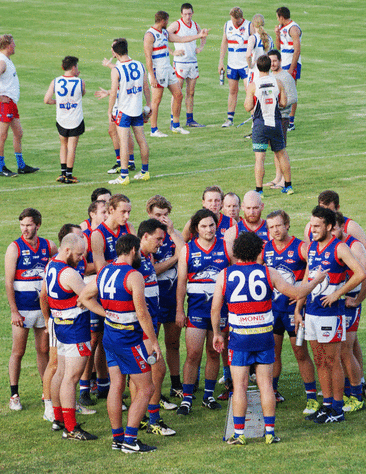
The far-reaching changes are contained in a strategic plan, circulated to all affected clubs by AFL Barwon (AFLB) in recent weeks.
Proposals in the document are aimed at both growing and correcting a current imbalance in football and netball competitions in Geelong (GFL), Bellarine and Geelong and District (GDFL) divisions over the next 10 years.
Included is the introduction of a promotion and relegation system from next year – similar to the English Premier League soccer model. Under the plan two teams would be relegated out of both the GFL and BFL to create 10-team competitions.
The GFL would initially have 14 teams, with an eight-team final. Longer term, a second division of the GFL would be introduced to accommodate anticipated growth in both sports across Geelong.
“These proposals aim to provide a more even competition and address the current situation where average winning margins in senior football and netball have significantly blown out in recent years. The proposed four-division structure will also cater for an expanding regional Geelong population with the creation of additional clubs and teams at the junior and senior levels,” said QFNC Secretary Peter Callahan.
“We are pleased to note that the concept of promotion and relegation will be based on a whole of club assessment rather than solely the ladder position of the senior football team. We believe it is vital that any decisions fully consider factors such as the depth and strength of the club’s junior and netball structures, financial stability, facilities, membership support and club governance structures.
“We are also very pleased to note that netball will always remain in the same competition or division as football. This is an important ingredient of community sporting clubs such as ours,” Mr Callahan said.
AFL Barwon is yet to determine whether the changes should be introduced over two or three years.
“[We acknowledge] these changes to the current competition structure that exists in the region are significant and that we need to move at a slower pace than originally proposed,” the organisation said. “However, given the evidence collected from around the state, we are of the opinion these changes are in the best interest in our efforts to grow participation, and in the best interests of the clubs.”
“On balance, with 34 clubs, it is clear that four divisions are needed to allow all clubs a reasonable opportunity to enjoy some on-field success over time. Initially having 10 teams in Division 1 and 2 will make both more competitive, it will also assist in the orderly movement of clubs. Once promotion and relegation has been implemented, divisions 3 and 4 will continue to evolve until both also have 10 teams.”
Data contained in the blueprint show significant discrepancies in the current level of competition. the average winning margin of BFL games is over 13 goals. In the Bellarine Netball League the margin is 27 goals.
“Queenscliff has enjoyed a measure of success in recent years and we are working hard to remain competitive in the BFL. We are also hopeful that other teams located on the Bellarine Peninsula are able to continue to compete in the same league and maintain the local rivalry that has existed for many years,” said Mr Callahan.
“Our preference is that no relegation or promotion of teams should occur before the 2018 season. This will allow the competition to adapt to the new points and salary caps which will commence operation in the 2016 season.”
Research undertaken indicates a potential for anywhere between 16 and 37 new football ovals in the Geelong region by 2030, including two in the green wedge between Ocean Grove and Point Lonsdale.
“The new grounds in the COGG region alone will need to accommodate between 111-262 approximately new teams based upon participation forecasting. Without any new senior male teams, these additional players will need to fit into the current 68 senior and reserves teams that run out every week,” the document states.